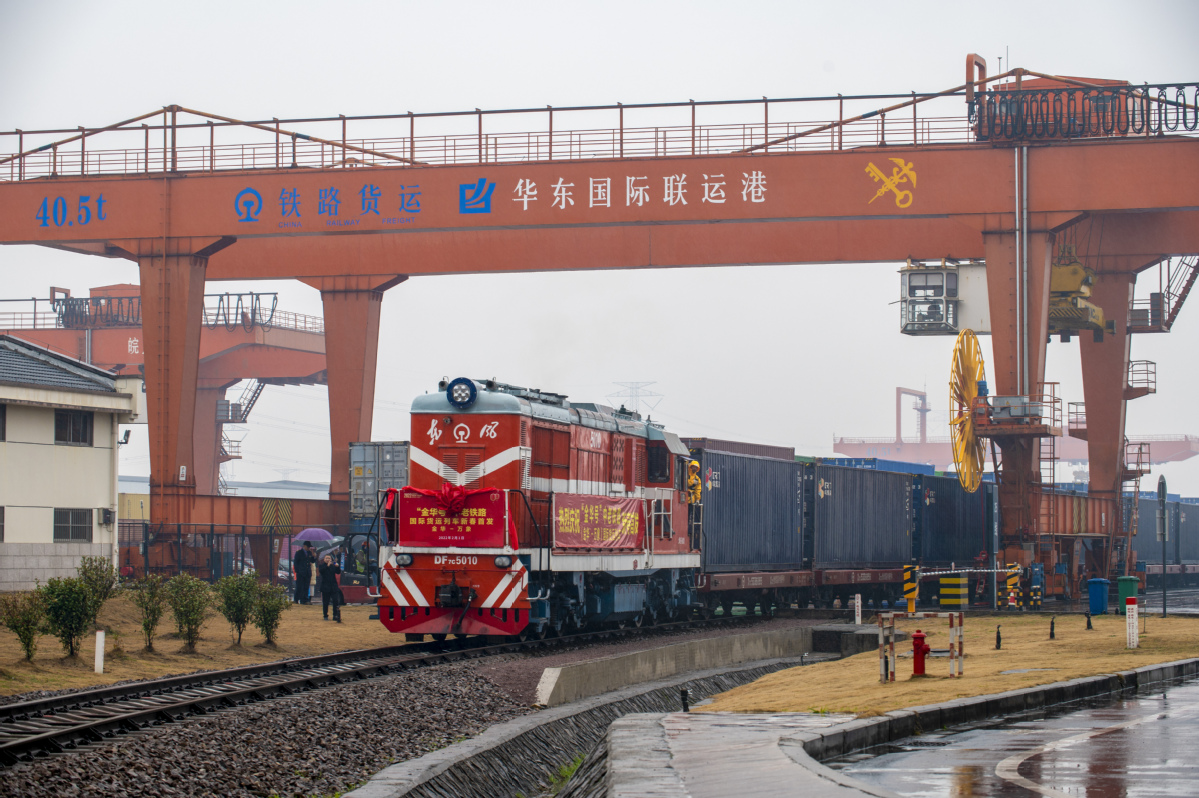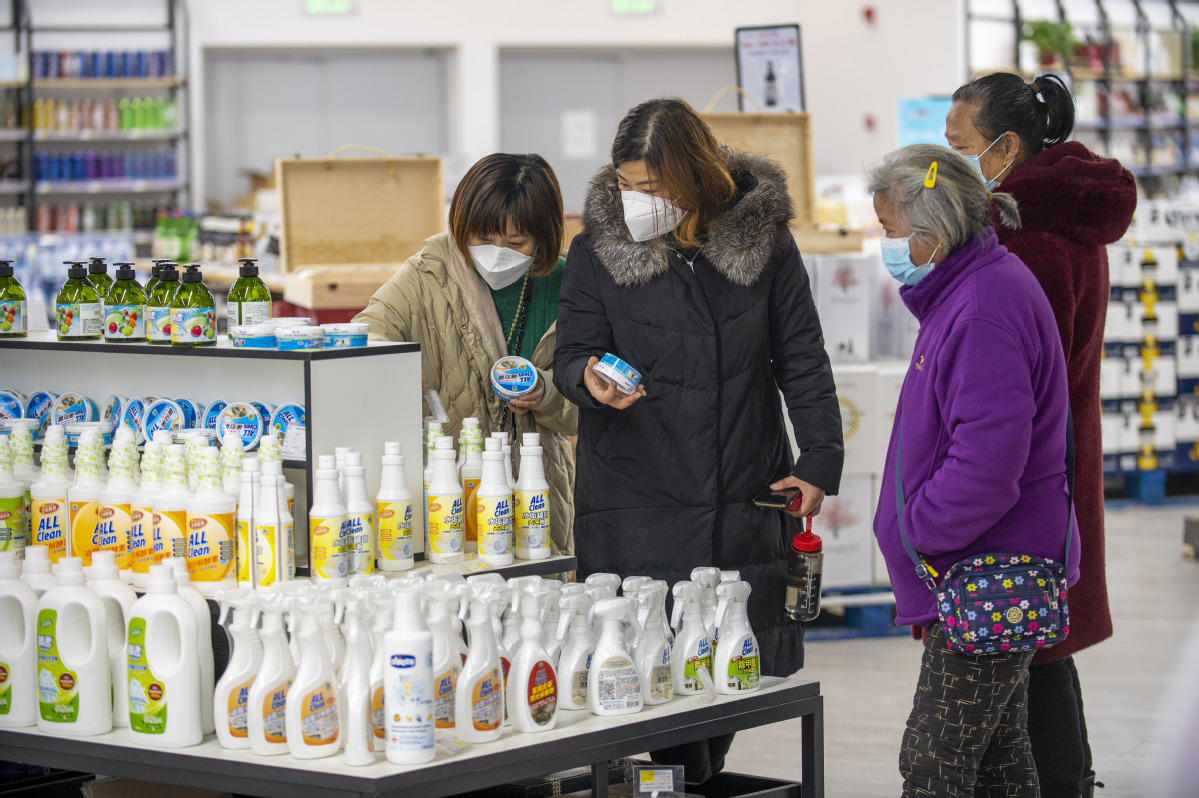Aligning with high-level global trade rules
By LIU ZHIHUA
New pact shows nation's efforts to expand opening-up; firms across world eye gains
Beijing-based China Construction Second Bureau Installation Engineering Co Ltd is all excited these days over its brightening prospects in Southeast Asian markets.
As the Regional Comprehensive Economic Partnership agreement took effect in 11 of the 15 signatory countries by Feb 1, the company realized its foray into Southeast Asia as early as 2008 will now give it an edge over competitors.
It already has dozens of construction contracts worth a combined 2.3 billion yuan ($361 million) in the region, including some in Vietnam, Malaysia, Cambodia and the Philippines.
"With the RCEP agreement's implementation, our spending on construction materials, equipment and machinery will be significantly reduced due to tariff eliminations and cuts," said Yang Chenghui, general manager of the company's Southeast Asian arm.
"Moreover, easier market entry and wider market access under the agreement, especially in construction and related fields, also promise greater market opportunities for us in the RCEP region."
Yang said he believes Chinese enterprises have relatively strong competitiveness in construction and related industries, and therefore will enjoy an increased presence in Southeast Asian markets as market restrictions ease in the RCEP era.
Yang's views found an echo among analysts and business leaders who said the implementation of the RCEP agreement will lead to more market opportunities for enterprises at home and abroad, thanks to the accelerated regional market integration in the world's largest free trade bloc.
Members of the RCEP make up nearly a third of the world's population and account for about a third of global gross domestic product.
The implementation of the trade treaty, a milestone in China's unwavering efforts to expand all-around high-level opening-up, will also accumulate valuable experiences for the nation to align domestic regulations with high-standard international economic and trade rules to deliver on its goal of expanding opening-up, they said.
Initiated by the Association of Southeast Asian Nations in 2011, the RCEP agreement was signed in November 2020 by China, Japan, South Korea, New Zealand, Australia and all 10 ASEAN member states.
On Jan 1, the pact went into force in China, Japan, Australia, New Zealand and six ASEAN states (Brunei, Cambodia, Laos, Singapore, Thailand and Vietnam). It later took effect in South Korea on Feb 1 and will be implemented in Malaysia from March 18.
"The RCEP agreement demonstrates China's desire to integrate into the global economy and further open up to the outside world," said Zhu Tian, the Santander chair in economics and EMBA program director at China Europe International Business School, or CEIBS, in Shanghai.
Creating a unified system of rules in the region, the free trade agreement helps foreign investors to enjoy access to a whole region when they access a single country with broader markets, lower operating costs and easier outward investment, Zhu said.
Page 2
By LIU ZHIHUA | China Daily | Updated: 2022-02-14 09:11 





Wu Xiaobin, president and chief operating officer of BeiGene, a global science-driven biotechnology company, said while China's further opening-up provides Chinese patients better access to foreign quality medicines, it also enables the innovative medicines that have been widely recognized in China to go abroad faster.
"Including ASEAN countries, the RCEP region has a total population of more than 2 billion where massive medical needs are not met," Wu said, adding the company is committed to providing world-class innovative medicines to more patients in the Asia-Pacific region under the RCEP agreement and contributing to the development of the global biotech industry as well as the improvement of the health of people in more countries.
Wang Yiming, vice-chairman of the China Center for International Economic Exchanges, highlighted the significance of tariff concessions of the trade agreement, its cumulative rules of origin, and the remarkable improvement in trade and investment liberalization and facilitation.
The agreement will eventually eliminate 90 percent of tariffs on goods traded within the region. It also allows products to enjoy tariff removal and reduction as long as they have 40 percent of the total value to be added within the region.
That will largely enhance free flows of products, capital and information among the RCEP members to form stronger regional economic ties and more resilient regional industrial and supply chains, Wang said.
He also spoke highly of the RCEP agreement's provisions on services trade. Members of the agreement have all committed to the opening-up of more than 100 segments in the services sector, covering financing, telecommunications, transportation, tourism, and research and development, which will significantly stimulate the growth of trade in services, he said.
According to Huo Jianguo, vice-chairman of the China Society for World Trade Organization Studies, China's high-level opening-up will be on a faster track based on its domestic adjustments to fully fulfill the RCEP commitments.
That will also facilitate the nation's pursuit of joining the Comprehensive and Progressive Agreement for Trans-Pacific Partnership, an 11-nation trade agreement with even higher standards for trade rules and market access compared with the RCEP agreement, Huo said.
"Aligning with high-level international economic and trade rules has become an important aspect among China's holistic efforts to expand high-level opening-up," he said.
"To meet demands and standards for high-level opening-up, China has carried out many pilot works and alterations, especially in pilot free trade zones and the Hainan Free Trade Port, such as regulatory adjustments, further opening up of financial and other services sectors and improvement of the business environment."
Page 3
By LIU ZHIHUA | China Daily | Updated: 2022-02-14 09:11 





According to the Ministry of Commerce, China has made the highest level of openness commitments for trade in services in the RCEP agreement among all the FTAs it had signed. The country has signed 19 FTAs with 26 economies.
China has promised to open up 22 more segments in the services sector, like senior care, professional design, management and consulting, manufacturing services, sports and entertainment, and market research, in addition to its commitment to open up 100 subsectors under nine industries to join the World Trade Organization in 2001.
It has also made higher-level openness commitments to 37 services subsectors, including legal services, construction and engineering, insurance, banking, securities, ocean freight and related services, translation and interpretation, and advertising.
Stephane Mascarau, general manager of Servier China, said pharmaceutical companies such as Servier see growing opportunities in introducing innovative medicines to China and reaching out to more Chinese patients with medical needs.
"The higher life expectancy and ongoing medical system reform in China have provided consistent growth potential for multinational pharmaceutical companies in the healthcare market," he said.
The advancement of medical reform policy is expanding demographic coverage of primary healthcare, which is essential, especially for remote areas. The aging population is escalating the demand for treatment of chronic illnesses, he said.
Wang with the China Center for International Economic Exchanges said the accelerated opening-up of professional producer services in the RCEP region, like research and development, professional design and information services, will usher in more cooperation impetus for sectors such as digital economy, pharmaceuticals, healthcare and new energy.
He said China's expanding consumption and imports will create better conditions for other RCEP member economies to increase exports, as well as help improve regional economic and trade cooperation.
According to the MOC, tariffs on more than 65 percent of goods traded between China and Australia, China and New Zealand, and China and ASEAN member states were to be abolished immediately upon the agreement becoming effective.
China has promised tariff elimination on a range of more ASEAN products, including some chemical products, paper products, diesel engines and some auto parts, apart from items included in the FTA between China and ASEAN.
Forming direct free trade relations with Japan for the first time, China removed tariffs on 25 percent of Japanese exports to China on Jan 1, while 57 percent of Chinese exports to Japan are tariff-free now. Tariff concessions on agricultural products have also been arranged for the first time between the two nations.
With South Korea, China has promised tariff concessions and removals on imports of goods, such as textile products and stainless steel, while South Korea made tariff commitments on Chinese products like antler and dextrin, apart from items already included in their bilateral FTA.
Zhu with CEIBS said as the largest economy in the RCEP region, China should play a key role in further enhancing the level of trade among Asian economies.
Wu, who is also general manager of the local subsidiary of BeiGene, suggested China should strengthen regulatory coordination and communication in the field of innovative medicines with other RCEP countries, as well as promote nongovernmental collaboration on science and technology, economics, trade and production capacity, to gather related experience for similar cooperation with more economies.
















































First, please LoginComment After ~